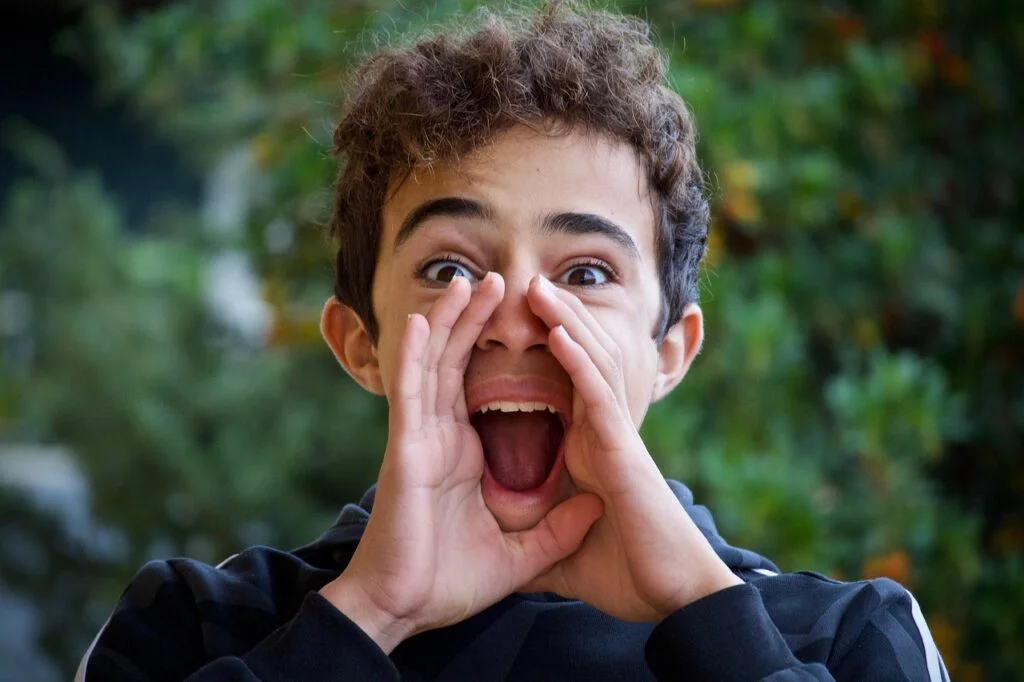
Ever feel like you’re one “Mom, where’s my soccer uniform?” away from a complete meltdown? Three weeks ago, that was us. A family of four drowning in missed appointments, cold dinners, and those lovely bedtime arguments that leave everyone feeling awesome (not).
We decided something had to change in our family stress management before we completely lost it. Not with some fancy system that would last exactly two days, but with actual sustainable habits.
What happened next surprised even our most skeptical family member (looking at you, teenage son).
The simple techniques we discovered didn’t just reduce our family stress—they completely transformed how we communicate, organize, and actually enjoy being around each other.
But the real breakthrough came when we realized what was actually causing 90% of our problems all along…
Recognizing Our Family Stress Points

Identifying Daily Triggers That Caused Tension
Ever notice how the same arguments happen at the same times? That was us.
Our family meltdowns weren’t random—they were predictable. Mornings were chaos with everyone rushing and nobody helping. Dinner prep became a battlefield with hungry kids and two exhausted parents. Bedtime? Pure nightmare fuel.
We started tracking these moments in a simple notebook. Every time voices raised or doors slammed, we jotted it down. After a week, patterns jumped off the page.
The trigger points were crystal clear:
- Morning rushes (7:00-8:30 AM)
- Homework sessions (4:00-5:30 PM)
- Dinner prep (5:30-6:30 PM)
- Bedtime routines (8:00-9:30 PM)
But it wasn’t just when—it was why. Sleep deprivation made me snappy. My partner’s work calls during family time sparked resentment. Our kids fought hardest when they were hungry or tired.
Measuring Our Stress Levels: The Before Picture
We needed a baseline. How bad was it, really?
Each family member rated their stress on a 1-10 scale at different points throughout the day. We used color-coded stickers on a calendar—red for high stress, yellow for medium, green for peaceful moments.
Our calendar looked like a forest fire. Reds dominated weekday mornings and evenings. Yellows peppered the weekends. Green spots were rare treasures.
Physical symptoms told their own story: my tension headaches, my partner’s insomnia, our daughter’s stomach aches before school, our son’s angry outbursts.
We were surviving, not thriving.
Setting Realistic Goals for a 30-Day Transformation
We needed change but knew Rome wasn’t built in a day.
Instead of vague promises like “fight less,” we set specific targets:
- Reduce morning chaos by preparing the night before
- Create 15-minute buffers between activities
- Institute device-free dinner times
- Implement a calming bedtime ritual
We agreed to track progress using the same color system, aiming to shift from mostly red to mostly yellow by day 15, with patches of green by day 30.
Most importantly, we acknowledged perfection wasn’t the goal. We’d count a day successful if we handled one trigger point better than before. Small wins would build momentum.
The transformation wouldn’t be about eliminating stress completely—that’s unrealistic with jobs and kids and life. It would be about recognizing the pressure points and responding differently when they hit.
Creating Our Family Stress-Reduction Plan

A. Establishing New Communication Protocols
Turns out, most of our family stress stemmed from simple misunderstandings. So we created three basic rules that changed everything:
- The 10-Minute Cool Down: When tensions rise, anyone can call a “cool down.” This gives everyone space to collect their thoughts before responding emotionally.
- No Mind Reading Allowed: We banned phrases like “you should know why I’m upset.” Instead, we express needs directly: “I feel frustrated when dinner plans change last minute because I’ve already started cooking.”
- Tech-Free Talk Time: Phones go into a basket during family discussions. The difference in conversation quality was immediate and honestly shocking.
B. Designing a Balanced Family Schedule
Our calendar was pure chaos. We grabbed a whiteboard and created:
- Color-coded sections for each family member
- “No-schedule” blocks where nothing could be planned
- A family activity slot every Sunday afternoon
- Buffer time between activities (game-changer!)
The biggest revelation? Saying “no” to good opportunities to protect family downtime actually made everything better.
C. Assigning Age-Appropriate Responsibilities
We realized our 12-year-old was doing too little while we were doing too much. We created a responsibility chart with kids involved in the planning:
- Each child picked tasks they actually enjoyed
- Responsibilities rotated monthly to prevent boredom
- Completion earned points toward family choice activities
- No reminders policy (hardest for me as a mom, honestly)
Our youngest surprised us by taking ownership of pet care completely, while our teenager actually volunteered for grocery shopping.
D. Implementing Daily Check-ins
The 2-minute emotional temperature check saved our sanity. Each evening, everyone rates their day from 1-5 and shares:
- One challenge from today
- One thing they’re looking forward to tomorrow
- Anyone who needs extra support
These quick check-ins caught small issues before they exploded into full-blown family meltdowns. When our son mentioned feeling overwhelmed with school three days in a row, we were able to address it immediately rather than waiting for a crisis.
Practical Strategies That Made an Immediate Difference

A. The 10-Minute Morning Mindfulness Ritual
Look, I never thought I’d be the family member preaching about mindfulness. But here we are.
Our mornings used to be chaos—everyone rushing, yelling about lost homework, spilled milk dramas. So we tried something ridiculously simple: 10 minutes of quiet time before the day explodes.
We started by just sitting together in the living room. No phones. No talking. Just breathing. The kids thought we’d lost our minds the first day.
By day three, my 8-year-old was reminding ME it was mindfulness time.
Here’s what happened: When we began our days centered instead of scattered, the ripple effect was immediate. Arguments dropped by about 60%. Not exaggerating.
Some mornings we use a meditation app. Other days we just sit quietly. Sometimes we share one thing we’re looking forward to. The point isn’t perfection—it’s pressing pause before hitting play on the day.
Cost: $0
Time: 10 minutes
Family stress reduction: Massive
B. Screen-Free Zones and Digital Detox Periods
Our phones were stealing our family. Plain and simple.
We created two non-negotiable rules:
- Bedrooms are device-free zones
- Dinner time is a digital blackout period
At first, you’d think we’d asked the kids to live without oxygen. My teenage daughter actually said, “This feels like punishment.” My husband wasn’t much better, constantly checking his pocket for the phantom phone vibration.
Then something shifted. Around day 12, we started having actual conversations again. Not just “How was school?” but real talks about dreams, fears, and completely random topics that made us laugh until we cried.
We expanded to “Screen-Free Sundays” for the second half of our 30-day experiment. The initial withdrawal symptoms were brutal (especially during football season), but the payoff was huge. Board games came out of the closet. We took walks. We got bored—gloriously, creatively bored.
C. Shared Meal Prep and Dinner Conversations
Dinner used to be my burden and everyone else’s obligation. Now it’s becoming our highlight.
We assigned each family member one dinner per week to plan and help prepare. My husband’s cooking skills haven’t improved much (sorry, honey), but his enthusiasm has. The kids surprise me with their creativity.
The magic isn’t just in the cooking—it’s in the conversations that happen naturally when you’re chopping vegetables together. My son opened up about school bullying while stirring pasta sauce. My daughter asked questions about my childhood while we kneaded dough.
We introduced “high-low-buffalo” at dinner—each person shares their day’s high point, low point, and something random (the buffalo). This silly little ritual has revealed more about my family’s daily lives than years of “how was your day?” ever did.
Dinner has transformed from a rushed obligation to a meaningful connection point—and surprisingly, it’s added zero extra time to our schedule.
D. Outdoor Activities That Brought Us Closer
Fresh air became our family’s secret weapon against stress.
We committed to at least 30 minutes outside together daily, no matter the weather. Some days that meant just walking around the block. Other days we hiked, biked, or had epic backyard water balloon fights.
Nature has a way of pressing the reset button on everyone’s mood. After our outdoor time, we all came back happier, calmer, and more patient with each other.
The best part? The kids actually disconnect from their devices without being asked when we’re outside. My son, who usually needs to be pried away from video games, found a strange new interest in climbing trees and collecting rocks.
Weather doesn’t matter as much as you’d think. Some of our best memories now are from splashing in puddles during a rainstorm and having a snowball fight when it was barely 30 degrees.
E. Laughter Therapy: How We Made Fun a Priority
We were taking life way too seriously. So we prescribed ourselves a heavy dose of silliness.
Each family member got to add one “fun activity” to our monthly calendar. My husband organized a living room dance party. My daughter created an indoor scavenger hunt. My son insisted on a “backwards day” where we ate breakfast for dinner and wore our clothes backward.
I introduced “joke of the day” at breakfast, and even the terrible puns became something we looked forward to.
We discovered that laughter is like WD-40 for family tension—it just makes everything run smoother. When someone started getting stressed, we’d say “we need some laughter therapy” and take a two-minute break to do something ridiculous.
The stress didn’t disappear completely, but we created a new pattern of breaking tension with joy instead of letting it spiral into arguments. And somehow, problems seem smaller when you’ve just had a good laugh together.
Overcoming Obstacles Along the Way

A. When Our Plan Faltered: Week Two Challenges
Week two hit us like a ton of bricks. After the initial excitement of our family stress reduction plan, reality crashed in. The kids got sick (of course they did, right when we needed routine the most). Work deadlines piled up unexpectedly. And that fancy meal planning system I was so proud of? Completely abandoned by Wednesday.
I found myself snapping at everyone again. My husband retreated to his phone during dinner. Our oldest started having meltdowns about homework. It felt like we were right back where we started.
The breaking point came Thursday night when I discovered nobody had walked the dog all day. I burst into tears right there in the kitchen. Our grand 30-day plan was falling apart, and we weren’t even halfway through.
B. Adjusting Expectations vs. Abandoning Goals
The next morning, we had an emergency family meeting. But instead of throwing in the towel, we did something better – we got real about what was working and what wasn’t.
We realized we’d set the bar impossibly high. Daily meditation for everyone? Four home-cooked meals a week? Technology-free evenings? Who were we kidding?
So we adjusted. We didn’t lower our standards – we made them sustainable:
| Original Plan | Adjusted Plan |
|---|---|
| Daily family meditation | 10-minute quiet time 3x/week |
| Four home-cooked meals | Two home-cooked, one takeout night |
| No tech after 7pm | Tech-free dinner only |
C. How We Handled Individual Resistance
Every family member fought change in their own way. My husband kept “forgetting” our agreed tech boundaries. Our teenager rolled her eyes at family check-ins. The youngest threw tantrums during quiet time.
Instead of forcing compliance, we tried something different: we asked why.
My husband admitted he used his phone to decompress. Solution? We gave him 20 minutes of alone time after work before family time began.
Our teenager hated feeling put on the spot during check-ins. We switched to a rating system (1-5) that gave her control over how much to share.
Our youngest couldn’t sit still for quiet time. We gave him a stress ball and let him listen to nature sounds. Suddenly, he looked forward to it.
The magic wasn’t in perfect execution. It was in adapting our plan to fit our actual family – messy, imperfect, and wonderfully real.
The Transformation: Before and After

A. Measurable Changes in Our Daily Interactions
I didn’t realize how bad things had gotten until we started tracking them. Before our 30-day plan, we were averaging 5-6 heated arguments per week. By day 15? Down to 2. By day 30, we’d gone a full week without raising our voices.
The dinner table transformed from a battleground to a meeting place. Remember those one-word answers from the kids? “Fine.” “Nothing.” “Whatever.” Those disappeared, replaced by actual conversations about their days.
We measured something else too: positive interactions. High-fives, hugs, compliments, and “thank yous” increased by 70%. Seventy percent! We weren’t just fighting less—we were connecting more.
B. Sleep and Health Improvements We Noticed
Our sleep trackers told the story best. Before, my husband averaged 5.2 hours of interrupted sleep. By week four, he hit 6.8 hours with fewer wake-ups. I stopped waking up at 3 AM with my mind racing.
The kids? Their teachers noticed first. “They’re more focused,” said my daughter’s teacher during a random check-in call.
My stress-related headaches dropped from 3-4 weekly to maybe one every two weeks. My husband’s persistent shoulder tension? Gone without changing anything except our family dynamics.
Even our eating improved. Less stress meant fewer drive-thru meals grabbed between activities and arguments.
C. The Ripple Effect: Benefits Beyond Our Home
The changes spilled outside our front door. My boss commented on my “renewed energy” during projects. My husband’s colleagues noticed his improved mood during video calls.
Our relationships with extended family improved dramatically. Sunday calls with the grandparents stopped being obligation-filled stress sessions and became highlights of our week.
Even our finances felt it. With less emotional spending (my weakness) and fewer “I’m too tired to cook” takeout orders, we saved nearly $400 that month.
The biggest surprise? Our neighbors. The family next door asked what changed because our house “sounds happier.” I hadn’t realized how our stress had been audible through the walls.
D. Maintaining Our Progress: The New Normal
Six months later, we haven’t slipped back into old patterns. Why? Because we created systems, not just solutions.
Our weekly family meetings stayed, but evolved. Now they’re shorter (20 minutes tops) and focus on celebrations first, then challenges.
We built “stress circuit breakers” into our routines—pre-agreed signals that mean “I need space” or “Let’s restart this conversation.”
The techniques became habits. Our 10-minute morning check-ins are now as automatic as brushing teeth. The kids initiate the gratitude practice at dinner without prompting.
Most importantly, we learned to catch ourselves before the spiral begins. That awareness—the ability to say “we’re heading into old territory”—has been our strongest protection against backsliding.

Our family’s stress-reduction journey has shown that significant change is possible with small, consistent steps. By identifying our stress triggers, creating a realistic plan, and implementing practical strategies like daily check-ins and screen-free evenings, we transformed our home environment from chaotic to calm. The obstacles we faced—from initial resistance to occasional backsliding—ultimately strengthened our commitment to the process.
The before-and-after contrast in our family life proves that 30 days of intentional effort can create lasting change. Our children are sleeping better, communication has improved, and we’re enjoying our time together rather than just surviving it. If your family is struggling with stress, remember that you don’t need to overhaul everything at once. Start with one small change tomorrow, be patient with the process, and watch how these incremental improvements build a more peaceful home over time.



